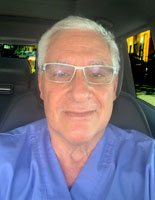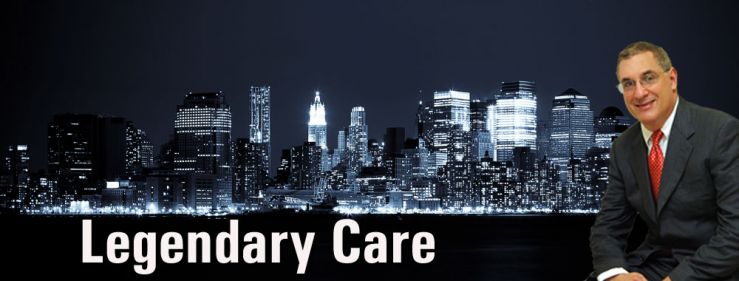Spinal Stenosis Overview

Orthopaedic Surgeon and Founder
The term "spinal stenosis'' is heard quite frequently in South Florida because of the concentration of active senior in our populace. 'Spinal stenosis' is primarily an aging process. Many years ago it was called creeping paralysis. It was accepted that if one got old enough, one could acquire it and have to 'live and die with it.'
The two words are separated primarily for clarification. "spinal" giving the location, and "stenosis'' meaning the condition. Stenosis is derived from the Greek meaning, ''narrowing of a normally larger opening.'' The term 'stenosis' is widely used in medicine for different parts of the body.
The primary area discussed here is stenosis of the spine, which can occur in the cervical, thoracic, or lumbar region. We will address the lumbar area in this article because of the greater percentile that we see.
There are three motion segments between two lumbar vertebral bodies - one being the well known "disc'' or "shock-absorber space" between two vertebral bodies, and the lesser known two "facet joints" that adjoin just posterior to the disc space. These two joints are similar to most other joints in our bodies. The facet joints are where one vertebrae actually touches or connects to the vertebrae above or below with a thin layer of cartilage that is in between the bony surfaces. Each lumbar vertebral body has four joints, with two joints superior or toward the head, and two joints interiorly or toward the feet. Two are on the right side of the body and two are on the left side of the body. Two adjoining vertebral bodies joined together continue up the spine.
Factors making 'person predisposed to acquiring spinal stenosis can start in the womb as a result of genetics or congenital problems acquired from the mother. Generally, any of these factors result in lower back problems early in life and can continue to progressively worsen with time and gravity. There are many perfectly normal backs after childhood development that are mechanically ruined due to many self-destructive modes, but not all self controlled.
Some of these being poor posture. poor body mechanics, overweight, physical abuse, smoking, poor diet, all the way to many disease processes that we have no control over, such as osteoarthritis, rheumatoid arthritis, osteoporosis, scoliosis, and lordosis (sway back). The end result in many of these problems is spinal stenosis on the left, right, central, or all of the above, at any one given joint segment, primarily in the lumbar spine.
This leads us to ask, ''what does spinal stenosis effect, or what effects does spinal stenosis have?'' Primarily we are looking at the central part of the dural sac and/or the right and left nerve roots that exit between the two vertebral bodies. Each root gets its name by passing over the vertebral body and exiting through an opening between the two adjoining bodies called the "foramen,'' i.e. the L.5 root passes over the 5th lumbar vertebral body and exits L5-S1 foramen. One degenerative scenario would be that the disc collapses over time thus causing the facet joints to become inflamed or angry with their normal joint space being reduced. One motion segment cannot be disrupted without affecting the other two. When this occurs the inflammation causes spurring around the entire facet joint which causes it to become larger, thus invading the central part of the spinal canal, as well as, the root foramen, which lies just beneath the facet joint. Stenotic problems can then occur .
Then we have progressive subtle loss of motor or muscular use of one or both of our lower extremities or parts of those extremities. This occurs slowly, so that an aged person can hardly tell that it is happening until they have a fall or complain of weakness in one or both of their legs. It is tolerable for some and accepted as the aging process by others. Sometimes a cane or walker are supplemented to help ambulate. It is when the leg pain begins that people become alarmed about their condition, Then, fearing that they may have cancer or some other destructive problem, they elect to seek medical attention.
The diagnostic work-up is obtained through physical exam, a thorough medical and life history, x-rays, MRI - if deemed necessary, CAT scan - if available, and blood tests that help us to bring about a diagnosis. Based on the patient's medical condition at that time, a treatment plan is decided upon and begun, starting with the most conservative methods of physical therapy, epidural, and medications. If all else fails to resolve the problem, surgery must be considered.
